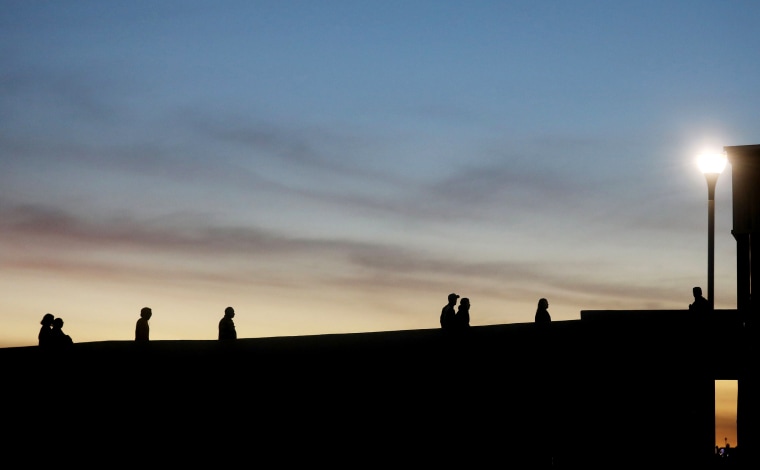The Trump administration began Tuesday its new policy of sending migrants seeking asylum back to Mexico, with the return of a Central American man over the border to Tijuana, a Department of Homeland Security spokesperson confirmed.
The migrant, a Honduran man, was sent back over the border under the Trump administration’s new policy requiring some asylum seekers to remain in Mexico instead of the U.S. while their immigration cases play out.
The administration announced the new policy last week, saying it was planning to begin turning asylum-seekers at the San Ysidro Port of Entry back across the border to Tijuana to await future immigration hearings, which will take place in San Diego.
Thousands of Central American migrants are already waiting in Tijuana, many living in shelters and in poor conditions.
The asylum-seeker taken to Mexico on Tuesday was identified as Carlos Catarlo Gomez by a source with Mexico's National Immigration Institute in Baja California, Mexico, who spoke to NBC News on condition of anonymity.
Upon arriving back in Tijuana, Catarlo Gomez asked for directions to a shelter, the source said.
A top Mexican immigration official said Monday that his country will accept migrants only between the ages of 18 to 60 and only at the border crossing in Tijuana, according to the Associated Press.
DHS did not immediately respond to request for comment about the Mexican official's remarks.
The return to Mexico of Catarlo Gomez coincided with a trip by Secretary of Homeland Security Kirstjen Nielsen to San Ysidro to assess implementation of the administration's “migrant protection protocols.”
Nielsen said in a statement Monday that the policy "will bring order to chaotic migration flows, restore the integrity of the United States immigration system, and allow DHS to focus resources on individuals who are actually fleeing persecution while holding individuals accountable who make false immigration claims."
U.S. Citizenship and Immigration Services issued a policy memorandum on Monday detailing the new plan, which includes having asylum officers interview migrants at the border to determine if it is “more likely than not” that the migrant would be persecuted or tortured in Mexico “on account of his or her race, religion, nationality, membership in a particular social group, or political opinion.”
Before the new policy, migrants who passed a credible fear interview with an asylum officer, the first step in the asylum process, were allowed to stay in the United States, either in detention or released into the country, while their cases were decided.
Federal court decisions mandate that migrant families with children should not be detained longer than 20 days. President Donald Trump has blamed this decision as the driver for a record number of families looking to claim asylum at the border.
While the number of families with children at the border has reached record highs, crossings at the southern border between ports of entry are significantly lower overall than in the 1980s through the 2000s.
Since the year 2000, apprehensions have fallen from yearly highs of up to 1 million or more migrants, according to Customs and Border Protection data. In the prior fiscal year that ended in September, 396,579 migrants were apprehended in between ports of entry.


